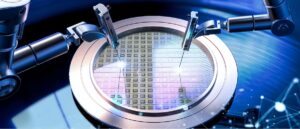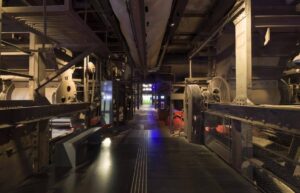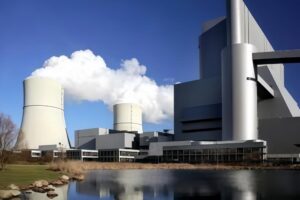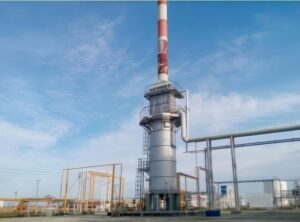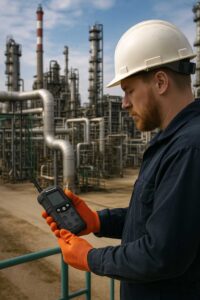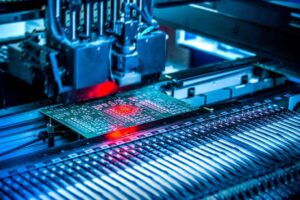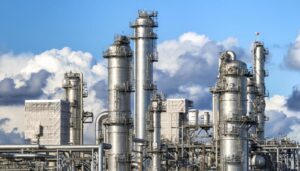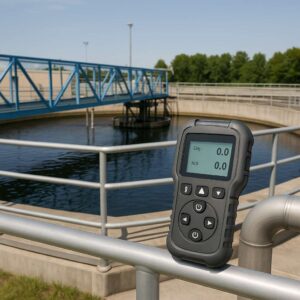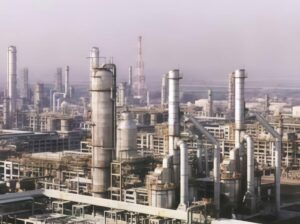In today’s era of rapid technological development, semiconductor technology is not only the core of the electronics industry, it also plays an important role in many other fields. Among them, the gas analysis industry is a little-known but crucial field. This article explores the critical role of semiconductors in gas analysis and its impact on the growth of the industry.
The Importance of Gas Analysis

First, let’s understand the importance of gas analysis. Gas analysis is a technology that involves detecting, measuring and analyzing the composition of gases. It has a wide range of applications in various fields, including environmental protection, industrial process control, medical diagnosis, food safety, etc. Accurately analyzing gas components can help us monitor environmental pollution, ensure industrial production safety, improve the accuracy of medical diagnosis, and protect food quality.
Semiconductors’ Key Role in Gas Analysis
In the gas analysis industry, semiconductor technology plays a vital role, and its applications involve sensor technology, control systems, and data processors.

1. Sensor technology
Semiconductor sensors are one of the most commonly used technologies in the field of gas analysis. It is based on the characteristics of semiconductor materials and can quickly and accurately detect the concentration of target gases. Semiconductor sensors usually use principles such as chemical adsorption, electrochemical reaction, and infrared absorption to detect gases. These sensors have the advantages of fast response, high sensitivity, low cost and small size, and are suitable for various application scenarios.
Take the gas sensor as an example. It is a common semiconductor sensor that uses the characteristic that the resistance of semiconductor materials changes with changes in gas concentration to detect gases. When the target gas reacts chemically with the sensor surface, it will cause the resistance of the semiconductor material to change. By measuring the change in resistance, the concentration of the target gas can be determined.
2. Control system
The application of semiconductor technology in gas analysis instruments is not limited to sensor technology, but also includes control systems. The control system realizes automatic control, data collection and remote monitoring of the instrument by integrating microprocessor, memory, communication interface and other functions. These control systems can realize automatic starting, running and stopping of the instrument, improving the stability and reliability of the instrument.
Take a microcontroller as an example. It is a semiconductor chip that integrates functions such as a microprocessor, memory, and input and output interfaces. It can realize real-time control and data processing of instruments. Microcontrollers have the advantages of small size, low power consumption, and low cost, and are suitable for control systems in various gas analysis instruments.
3. Data processor
The amount of data generated during the gas analysis process is huge and requires real-time processing and analysis. Semiconductor technology provides gas analysis instruments with high-performance data processors that can quickly process large amounts of data and extract useful information. These data processors can realize functions such as real-time display of data, trend analysis, and alarm prompts, helping users understand gas analysis results in a timely manner.

Take the digital signal processor (DSP) as an example. It is a semiconductor chip specially used to process digital signals. It has the characteristics of high speed, high precision and low power consumption. It is suitable for data processors in gas analysis instruments. DSP can perform digital filtering, spectrum analysis, data compression and other processing on the collected gas analysis data, thereby improving the efficiency and accuracy of data processing.
To sum up, semiconductor technology plays an irreplaceable role in the gas analysis industry. Its applications involve sensor technology, control systems, data processors and other aspects, providing performance improvement, cost reduction and application expansion of gas analysis instruments. provided important support and technical support. With the continuous development and innovation of semiconductor technology, it is believed that the gas analysis industry will usher in broader development prospects and bring more benefits to society, human health, environmental protection and other aspects.
The Impact of Semiconductor Technology on the Gas Analysis Industry
The development of semiconductor technology has had a profound impact on the gas analysis industry, playing an important role in everything from sensor technology to control systems and data processors.

1. Improved detection performance and sensitivity
The emergence of semiconductor sensors has significantly improved the detection performance of gas analysis instruments. Compared with traditional chemical analysis methods, semiconductor sensors have higher sensitivity and faster response speed, and can achieve rapid and accurate detection of trace gases. This enables the gas analysis industry to more accurately monitor gas components in environmental pollution, industrial processes and medical diagnostics, thereby better protecting the environment, ensuring production safety and safeguarding human health.
2. Realized the portability and automation of the instrument
The development of semiconductor technology has made gas analysis instruments lighter and more portable, allowing gas analysis to be performed anytime and anywhere. Traditional gas analysis instruments are usually bulky and heavy, making them difficult to carry and operate. Modern semiconductor sensor technology can achieve miniaturization and integration, integrating multiple functional modules on one chip, thereby greatly reducing the size and weight of the instrument and making it easier for users to move and operate.
In addition, semiconductor technology also enables automated control and remote monitoring of gas analysis instruments. By integrating functions such as microprocessors and communication interfaces, gas analysis instruments can automatically start, run and stop the instrument without manual intervention. At the same time, users can remotely monitor and manage gas analysis instruments through network connections to achieve real-time monitoring and control of the production process, improving the efficiency of instrument use and management effects.
3. Reduced costs and energy consumption
With the advancement of semiconductor technology, the cost of gas analysis instruments continues to decrease, and energy consumption is gradually reduced. Traditional gas analysis instruments usually require a large number of mechanical components and complex circuit designs, which are costly and consume a lot of energy. Modern semiconductor sensor technology can achieve integration and miniaturization, which greatly reduces the manufacturing cost and energy consumption of the instrument, making the gas analysis instrument more economical and practical.
In addition, the development of semiconductor technology has also promoted the intelligence and energy saving of gas analysis instruments. By integrating microprocessors and intelligent control algorithms, gas analysis instruments can achieve effective use and conservation of energy, reduce energy waste, lower usage costs, and meet the requirements of sustainable development.
Future Development Trends of the Gas Analysis Industry
With the continuous advancement of science and technology and changing social needs, the gas analysis industry is also facing new challenges and opportunities. The following are several trends in the future development of the gas analysis industry:

- Intelligence and automation: With the development of artificial intelligence, Internet of Things and big data technology, gas analysis instruments will become increasingly intelligent and automated. Future gas analysis instruments will have self-learning, adaptive and self-diagnosis capabilities, enabling more intelligent data processing and fault diagnosis, improving the stability and reliability of the instrument.
- Multifunctional integration: Future gas analysis instruments will increasingly achieve multi-functional integration, which can not only detect multiple gas components, but also integrate other sensors and functional modules, such as temperature and humidity sensors, pressure sensors, optical sensors, etc., to meet the needs of User needs for multi-parameter monitoring.
- Remote monitoring and cloud platform: With the development of cloud computing and Internet of Things technology, future gas analysis instruments will pay more attention to integration with cloud platforms to achieve remote monitoring, data storage and data sharing of instruments. Users can view gas analysis results, generate reports and trend analysis in real time through the cloud platform, thereby achieving real-time monitoring and management of the production process.
Innovation Driven by Semiconductor Technology
Semiconductor technology is one of the key driving forces in the gas analysis industry, and its innovation will continue to promote the development of the industry. The following are the innovation directions of semiconductor technology in the field of gas analysis:

- New sensor materials: The development of new semiconductor materials will lead to more diverse and higher-sensitivity gas sensors. For example, the application of new materials such as two-dimensional materials, nanomaterials and quantum dot materials will greatly improve the performance and stability of sensors.
- Applications of MEMS technology: The development of microelectromechanical systems (MEMS) technology will promote the research and application of miniaturized and integrated sensors. MEMS technology enables precise control of sensor size, sensitivity and power consumption, enabling more compact and efficient gas analysis instruments.
- Advanced process technology: Advanced semiconductor process technology will further promote the performance improvement and cost reduction of gas analysis instruments. For example, the application of deep sub-micron process technology, three-dimensional integration technology and post-process optimization will greatly improve the performance and reliability of integrated circuits.
The Gas Analysis Industry’s Relevance to Global Challenges
Finally, let’s look at the gas analysis industry’s relevance to global challenges. Gas analysis technology not only plays an important role in solving problems in daily production, but also plays a key role in solving global challenges.
- Environmental protection: Gas analysis technology can monitor the concentration of pollutants in the atmosphere, help governments and enterprises formulate environmental protection policies and measures, reduce environmental pollution and improve air quality.
- climate change: Gas analysis technology can monitor the concentration of greenhouse gases in the atmosphere, help scientists understand the trends and impacts of climate change, and provide scientific basis and technical support for mitigating climate change.
- Energy transition: Gas analysis technology can monitor gas emissions during energy production and consumption, help achieve energy transition and carbon emission reduction goals, and promote the development and utilization of clean energy.
To sum up, semiconductor technology plays an irreplaceable role in the gas analysis industry, and its innovation and development will promote the continuous progress of gas analysis technology and the expansion of application fields. At the same time, the gas analysis industry will continue to be closely connected with global challenges, providing important support and technical support for solving global issues such as environment, energy and climate.
Conclusion
In the gas analysis industry, semiconductor technology plays an irreplaceable role. It not only promotes the progress and innovation of gas analysis technology, but also promotes the improvement of instrument performance, cost reduction and application expansion. With the continuous development of semiconductor technology, it is believed that the gas analysis industry will usher in broader development prospects and bring more benefits to society, human health, environmental protection and other aspects.




